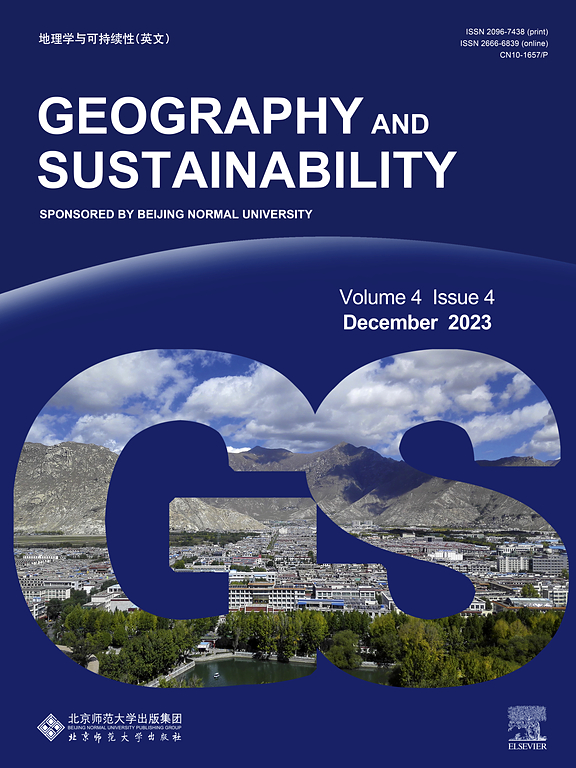Changing of the coordination of socioeconomic development and the environment as sustainable development progresses
IF 8
1区 环境科学与生态学
Q1 GEOGRAPHY, PHYSICAL
引用次数: 0
Abstract
The relationship between socioeconomic development and the environment is intimately linked with the level of regional sustainable development. Clarifying the evolution pattern of this relationship during the sustainable development progress is crucial for achieving all of the Sustainable Development Goals (SDGs), but less research has focused on this problem. Here, we have utilized statistical and remote sensing data from 290 municipal units in China to analyze the evolution of the coupling coordination degree (CCD) between socioeconomic development and the environment along a progression of sustainable development measured by the SDG Index. The results show that the hotspot areas of CCD are concentrated in coastal regions, gradually decreasing as they move inland. Additionally, as sustainable development progresses, both socioeconomic and environment levels exhibit a nonlinear rise. The coupling coordination between the two demonstrates a pattern of initial increasing, then decreasing, and finally increasing again, which may be related to changes in industrial structure. Our study delves deeply into the patterns of evolution in the relationship between socioeconomic and environments, exploring the challenges and opportunities faced by regions at different stages of sustainable development. The findings can deepen our understanding of sustainable development and provide policy suggestions and theoretical support for achieving SDGs.

求助全文
约1分钟内获得全文
求助全文
来源期刊

Geography and Sustainability
Social Sciences-Geography, Planning and Development
CiteScore
16.70
自引率
3.10%
发文量
32
审稿时长
41 days
期刊介绍:
Geography and Sustainability serves as a central hub for interdisciplinary research and education aimed at promoting sustainable development from an integrated geography perspective. By bridging natural and human sciences, the journal fosters broader analysis and innovative thinking on global and regional sustainability issues.
Geography and Sustainability welcomes original, high-quality research articles, review articles, short communications, technical comments, perspective articles and editorials on the following themes:
Geographical Processes: Interactions with and between water, soil, atmosphere and the biosphere and their spatio-temporal variations;
Human-Environmental Systems: Interactions between humans and the environment, resilience of socio-ecological systems and vulnerability;
Ecosystem Services and Human Wellbeing: Ecosystem structure, processes, services and their linkages with human wellbeing;
Sustainable Development: Theory, practice and critical challenges in sustainable development.
 求助内容:
求助内容: 应助结果提醒方式:
应助结果提醒方式:


